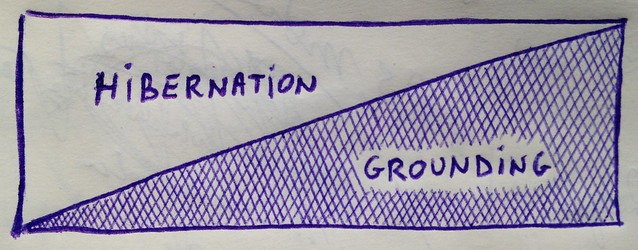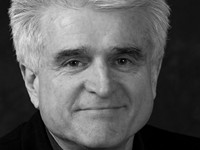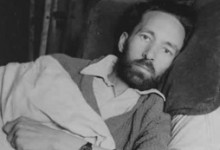This post was previously released on Daryl Conner’s blog and summarizes my thoughts on his Character and Presence series.
“The reward for conformity is that everyone else likes you except yourself.”
(Rita Mae Brown)
Are you one of those readers of Daryl’s blog who, like me, eagerly consumes his writings and podcasts at length? Even prints them out for further study? Do you find yourself silently saying “yes” when he talks about character and presence? If so, then I bet that, like me, you must have been frustrated when holding your track record against the light of his writings. It’s the frustration of being bitterly aware of how things are supposed to be—or even more confronting: how YOU are supposed to BE—and observing the opposite in and around yourself.
In this post, I am suggesting a way to work with what we have—in this case, the energy of the frustration, plus the sense of direction we obtain from our awareness. As it turns out, this is a good way to connect the dots between our character, our presence, and the profession we are in service to.
But first, I need to tell you about the chameleon law. The term was coined in 1944 by René Daumal in his unfinished novel, The Mount Analogue. The story of Mount Analogue is about making something happen that everyone around you says is impossible. The chameleon law, which he described as “the inner resonance to influences nearest at hand,” is our reptile-brain reflex to fit in whenever the circumstances are nudging us in a certain direction. As it happens, organizational change projects are mostly about creating a situation that does not yet exist; and thus we, as practitioners, have a higher likelihood of being exposed to the chameleon law.
As Daryl pointed out in the Character and Presence series, we have a choice in how we spend our days as organizational change practitioners:
“When it comes to our relationship with who we really are, hibernation can prove to be a much less painful alternative to feeling small (if not invisible) and/or contorting ourselves into who or what others want.”
I am painfully aware of those moments when we are running against our true character—just because the chameleon law is preventing our true presence from shining as it is supposed to. Those are the days when I come home tired. The days when my head is bursting with “should-haves” and “could-haves.” In terms of numbing scenarios, the three below more or less sum up my career as a practitioner:
- Zero-numbing. On multiple occasions, I have stepped out of an assignment to be true to my character and I showed it in every bit of my presence. At least, that’s what I thought, because people experienced me as obnoxious and hard to handle, and I wasn’t really listening that well. The sentence I heard myself saying most in those days was, “At least I can come home and look myself straight in the mirror.”
- Full-numbing. On other occasions, I stayed in—often disgusted and fatigued by my own sheepish behavior to fit in. I did exactly what was asked of me and even did the wrong things against my own will. Alas, I got tired of being comfortably numb faster than my clients, so I left—even without having any other prospect, and very much against the client’s will.
- Alternating. On still other occasions, I stayed, fit in, and used the occasion to create the right circumstances. The least I can say about those assignments is that they are everything but a piece of cake. If I were to draw a feelings diagram of those assignments, you would see a mountainous landscape. In this scenario, feelings of self-doubt and flow frequently take turns.
Not a pretty sight, right? If your track record looks the same, the challenge at hand is not to start feeling guilty about any of those moments. Guilt is the false price we pay when we don’t want to dig deeper to solve the root cause. As I stated in the beginning of this post, I am not describing a pain relief for this dilemma, but rather a way through. Instead, what you and I should do when we wake up from either one of those bad dreams is to examine closely what exactly caused us to obey the chameleon law. That’s the starting point: look for cues in your own behavior.

Here are some examples of cues that I have discovered in myself:
- I am zero-numbing when I fall prey to extreme perfectionism, suspicion, being right, and not getting over it when I’m wrong. Basically, I act as a persecutor on those occasions.
- I am full-numbing when I find myself not being interested in any detail, missing out on important information, and basically being the victim of circumstances.
- During alternating moments, I find myself feeling alive and very tired, and this can happen several times within the same day or week. Basically, the work is meaningful in those occasions, and overwhelming at the same time.
Learning “how” I am in any of those circumstances helps me to detect and course-correct “who” I am. Guilt makes a place for searching a different path. All in all, that “path” is an inner journey worth pursuing. The key words on that alternating journey are meaningful on the one hand, and balanced on the other hand.
It’s worth pausing there for a second because this is exactly where we can connect our inner journey to the third dot of client effectiveness. Where does the energy come from when our work is meaningful and we are able to strike a balance between the ups and downs? Time and again, I notice that this happens when I am grounded. To me, feeling grounded is tied to a specific experience:
- Being connected to myself. This is the opposite of the physical experience of numbing. It’s the physical awareness of being present.
- Being connected to the world. Like a lightning rod is connected to the earth, being grounded is what enables me to serve/conduct something bigger than what is on my personal agenda.
It is only by grounding ourselves that we can tap into an internal source of energy (as opposed to persecuting or victimizing for external energy sources). Grounding is an absolute necessity if we are to navigate toward client effectiveness. In our case, client effectiveness is all about gravity: our profession is about shaping the path for a future that has no gravity (yet) in the present.
Our own grounding is needed before a project can have some gravity or traction. All of a sudden, it becomes clear that reaching our inner alignment of a meaningful and balanced profession is a necessary precursor to client effectiveness. Without grounding into our character, there can be no presence. Without our grounded presence, there can be no traction for the possible to become thinkable and consequentially to come into being.
The moral of my story? The one thing you should remember is that there is no use in feeling guilty about hibernating. There will always be ups and downs. Focus on staying connected with yourself and hang on to the memory of what it’s like to be grounded. To quote René Daumal:
“You cannot stay on the summit forever; you have to come down again. So why bother in the first place? Just this: What is above knows what is below, but what is below does not know what is above. One climbs, one sees. One descends, one sees no longer, but one has seen. There is an art of conducting oneself in the lower regions by the memory of what one saw higher up. When one can no longer see, one can at least still know.”
By the way, René Daumal, who was one of the most gifted literary figures in twentieth-century France, died before the novel was completed, providing an extra symbolic meaning to our own journey.



